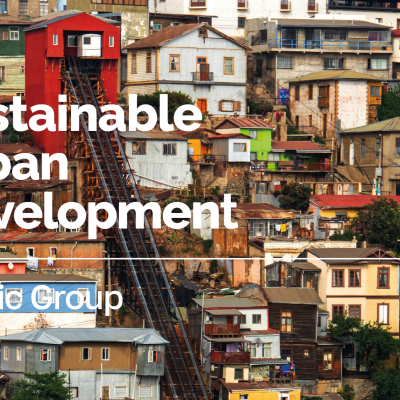With more than half of the world’s population now living in cities, experts agree that the continuing trend towards urbanisation is both inevitable and irreversible. New EC guidelines propose a fresh mindset to assist the development of better cities.
For the first time in history, more people live in cities than they do in rural areas. Today’s city dwellers face concerns such as growing population, resource availability and insufficient infrastructure, alongside the unpredictable factors of climate change and disaster risk.
“Planning is required to mitigate the undesirable side effects of urbanisation,” said Anastase Zacharas, Unit Energy, DG Development and Cooperation. “In the next fifteen to twenty years many cities in Asia and Africa will double their populations. The main challenges facing developers are how to balance the potential benefits with the costs in social and environmental terms, and turn cities into becoming “engines of growth”.”
At an event at the EuropeAid Infopoint, experts working in the field of Infrastructures, Energy and Urban Development presented a new EC tool, The Consultative Guidelines for Sustainable Urban Development Cooperation: a Strategic Approach. After a year of research and development, the 2012 guidelines were built upon a set first developed in 1998, to include relevant and useable approaches to apply to today’s situations in accordance to new international agreements on aid effectiveness.
“The guidelines are mainly geared towards policy makers, administrators, city managers, planner, architects – people who have a key role in providing city functions – because if they can change their minds about the ‘limited’ role they have in making cities successful, and broaden their awareness of what the contributing factors are … then we can have better cities,” said Urban Development and Regional Planning Policy Expert, Azim Manji, who was head of the guidelines’ development team.
For Azim Manji, the success of urban growth lies in a more integrated approach to planning, and a key element of this is capacity development in its broad sense i.e. change management. “What we need, I think, is champions - more than champions – change-makers, ” he said. “We have to find the right people in the city, regional, and national government who are committed to making things happen and work with those key individuals.”
“Capacity development is absolutely essential and necessary to instituting these new guidelines,” he continued, specifying that in addition to basic technical competencies, key personnel will need a better understanding of the language of architects, engineers and planners to allow an overview and comprehension of the development challenges.
The three important messages of the guidelines, said Mr Manji, are in changing the way we think about urban areas to include the opportunities they present. Also of crucial importance is finding a better response to social and economic inequities. Lastly, growing cities need to improve their resilience to natural disasters.
Looking at the adoption of the guidelines, Mr Manji was pragmatic. “A challenge for the guidelines is that people want to be told what to do,” he said.
“(But) the guidelines are about changing the way we think about urban areas. That's it. It’s not a prescription, it’s not a format or template.” Mr Manji stressed that every city has its own specific circumstances, which will need addressing with the advice of the guidelines. In line with urbanisation, he said, “These guidelines are not an end; they represent a process.”
Contributors to this collaborative piece: Anastase Zacharas, Azim Manji, and Jean-Louis Lacube. The views, opinions and the content herein do not represent the official view of the European Commission. Multimedia and collaboration facilitated by EuropeAid's capacity4dev.eu team


Log in with your EU Login account to post or comment on the platform.